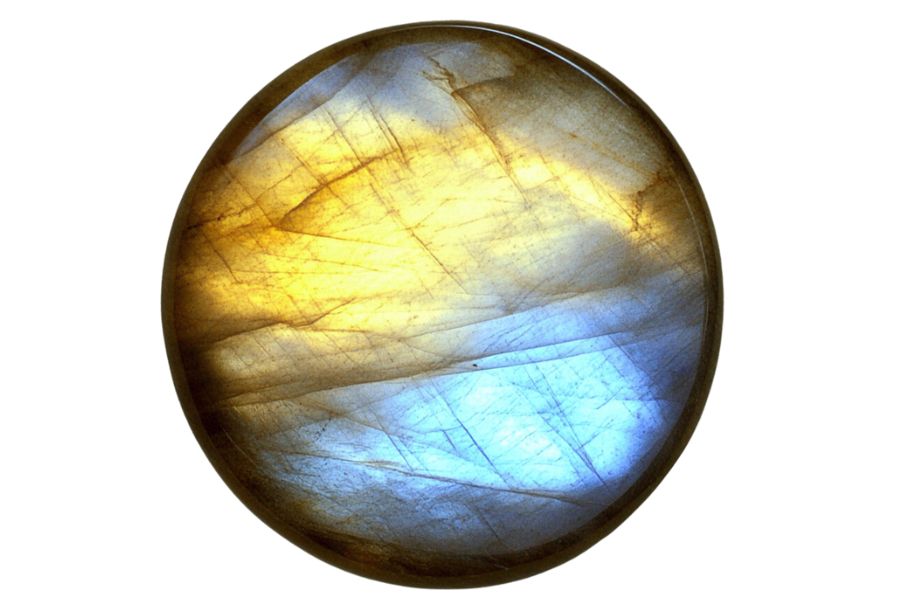Labradorite is a stunning stone with eye-catching colors. When light hits it just right, blues and greens shimmer across its surface. This natural wonder has made it a favorite among rock collectors and jewelry lovers alike. Many people don’t know that Arkansas has many spots where this beautiful stone can be found.
Finding labradorite in Arkansas can be an exciting adventure. The state’s rich geology offers plenty of chances to discover this gem. You don’t need to be an expert to enjoy the thrill of the hunt. Many folks spend weekends searching for these colorful treasures.
Arkansas has a long history with rocks and minerals. The state is famous for its crystal deposits and mining spots. While not as well-known as quartz or diamonds, labradorite has its own special place in Arkansas’s mineral story. Anyone with a bit of time and patience can try their luck at finding some.
How Labradorite Forms Here
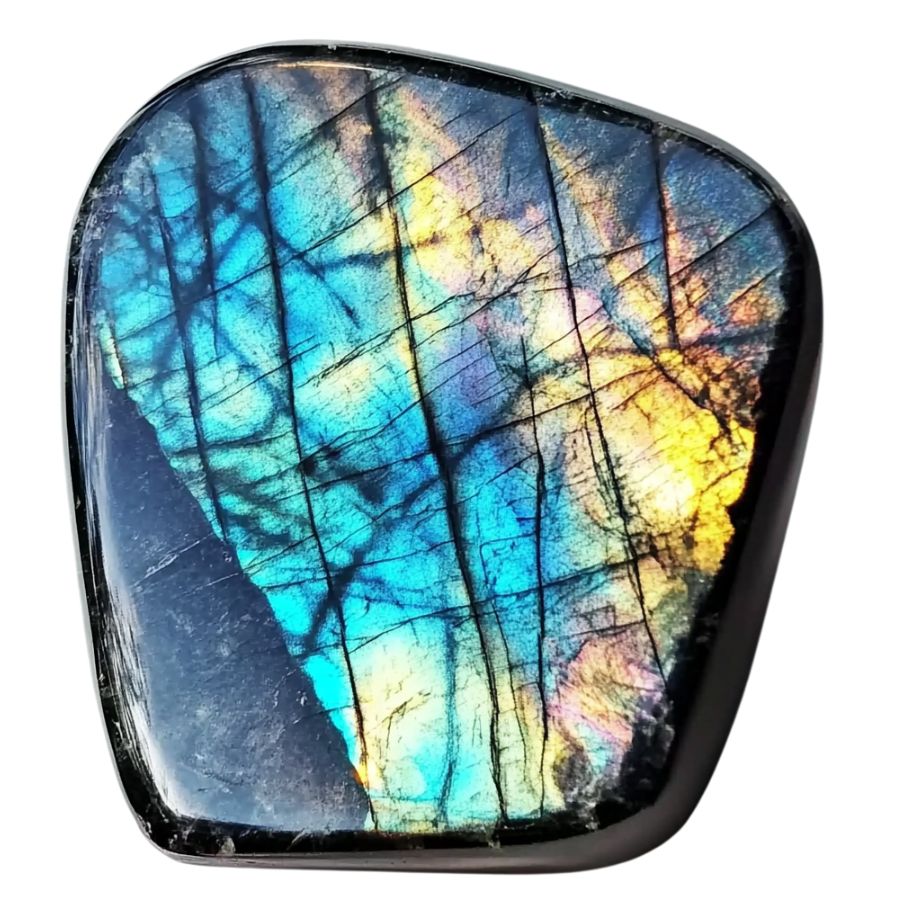
Labradorite forms deep underground when magma slowly cools and crystallizes. The process happens when different minerals separate while cooling, creating thin layers stacked on top of each other. These layers have slightly different chemical makeups, usually about 1 micron thick.
When light hits these layers, it creates that stunning blue-green flash we love, called labradorescence. The stone starts out as a mix of calcium, sodium, aluminum, and silicate minerals.
As it cools, these minerals organize themselves into this layered pattern, which happens most often in places where magma intrudes into the surrounding rock. It’s like nature’s own light show, frozen in stone.
Types of Labradorite
Labradorite comes in several distinct varieties. Each type exhibits special qualities that make it sought after by collectors.
Blue Labradorite
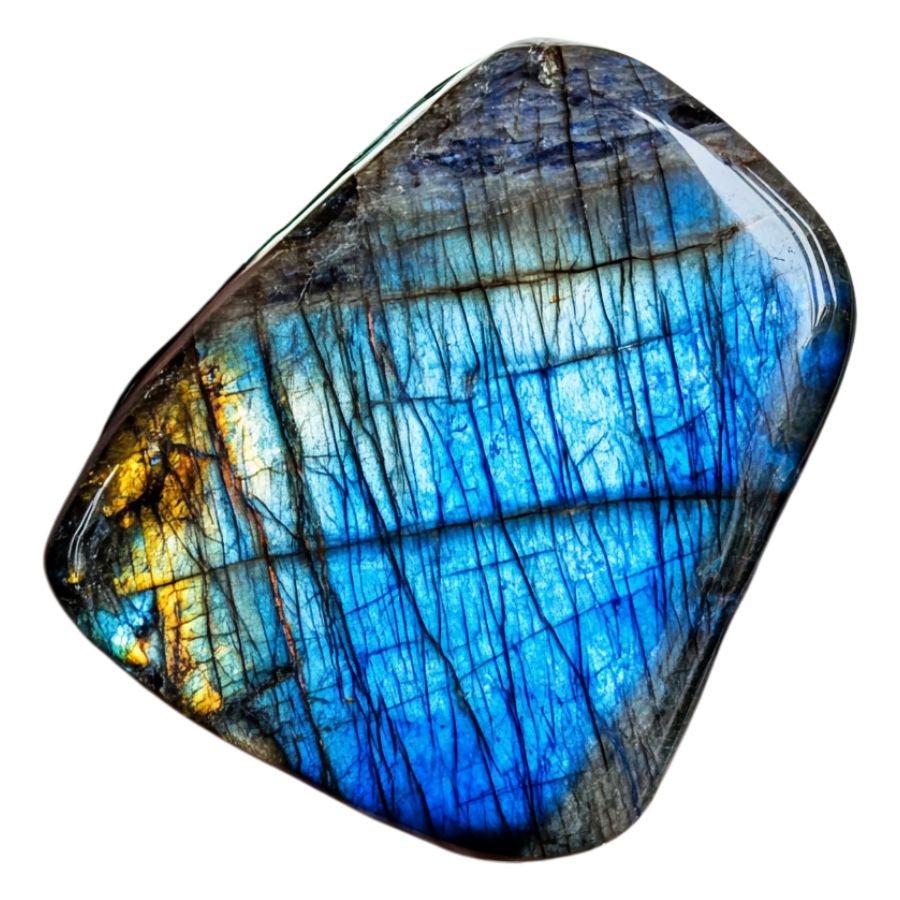
Blue Labradorite stands out for its remarkable blue iridescence against a dark gray or black background. When light hits the stone’s surface, it creates a stunning display of electric blue flashes, sometimes accompanied by hints of green or violet.
The blue flashes appear most vivid when viewing the stone from specific angles, creating an almost magical transformation as you rotate it. This effect is often compared to the ethereal beauty of the Northern Lights.
Exceptional specimens display an intense, electric blue flash that covers a large portion of the stone’s surface. Some pieces also show secondary colors like aqua or sea green, adding depth to their visual appeal. The contrast between the dark base and bright blue flashes makes each piece unique.
Golden Labradorite
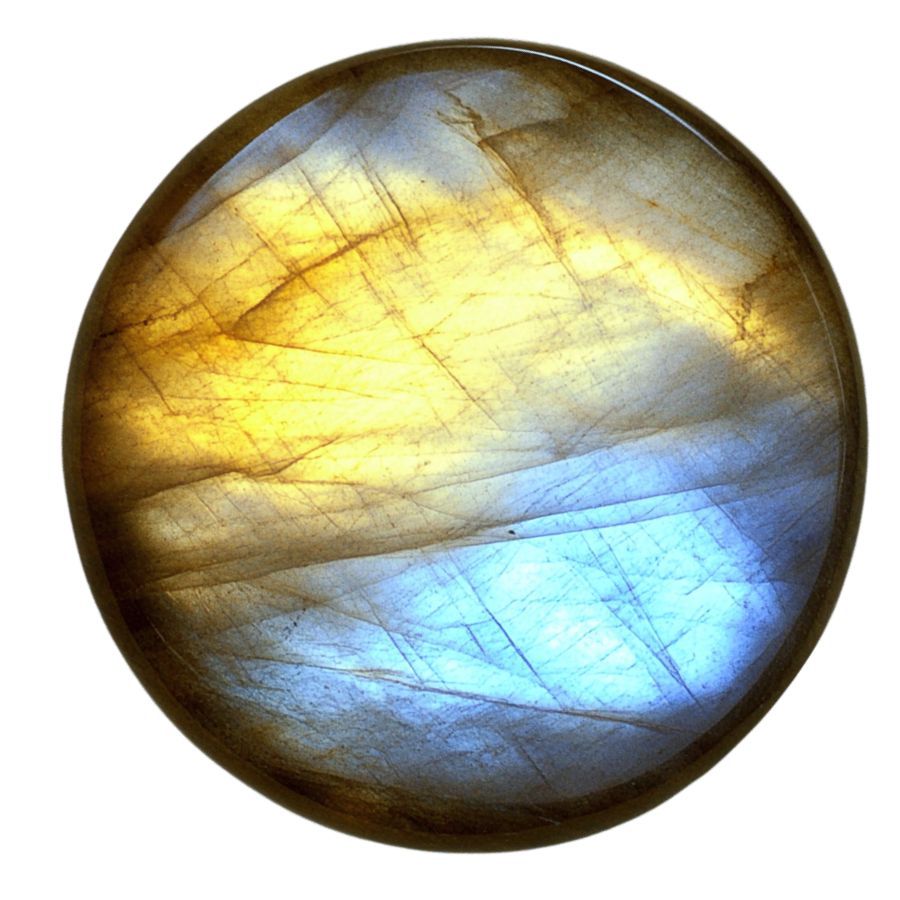
Golden Labradorite displays a mesmerizing golden-yellow sheen that sets it apart from other varieties. The stone’s surface exhibits brilliant flashes of gold and amber, creating a warm, sun-like glow that seems to emanate from within. These golden rays often appear alongside subtle hints of green or champagne colors.
What makes Golden Labradorite special is its ability to display multiple golden hues simultaneously. Some specimens show a range of colors from pale yellow to deep amber, creating a multi-dimensional effect.
The golden flash can vary in intensity and coverage, with premium specimens showing broad, bright areas of gold schiller.
Rainbow Moonstone
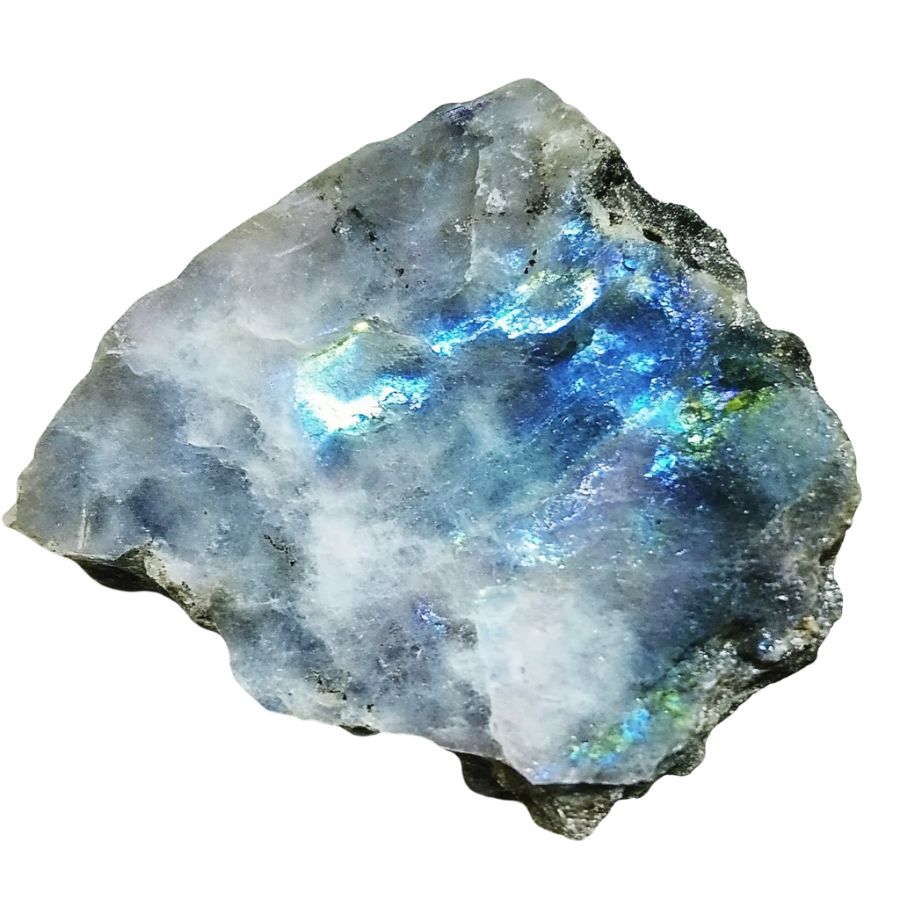
Rainbow Moonstone Labradorite exhibits a distinctive white or colorless base with an enchanting blue sheen that floats across its surface. Blue sheen is often accompanied by flashes of other colors, including pink, yellow, and green.
This stone’s most captivating feature is how its colors appear to float just beneath the surface, creating an almost three-dimensional effect. As light moves across the stone, these colors shift and change, revealing new patterns and combinations. This creates a dynamic display that seems to change with every movement.
The stone’s transparency can range from translucent to semi-transparent, with the most valued pieces showing excellent clarity beneath their shimmering surface.
Spectrolite
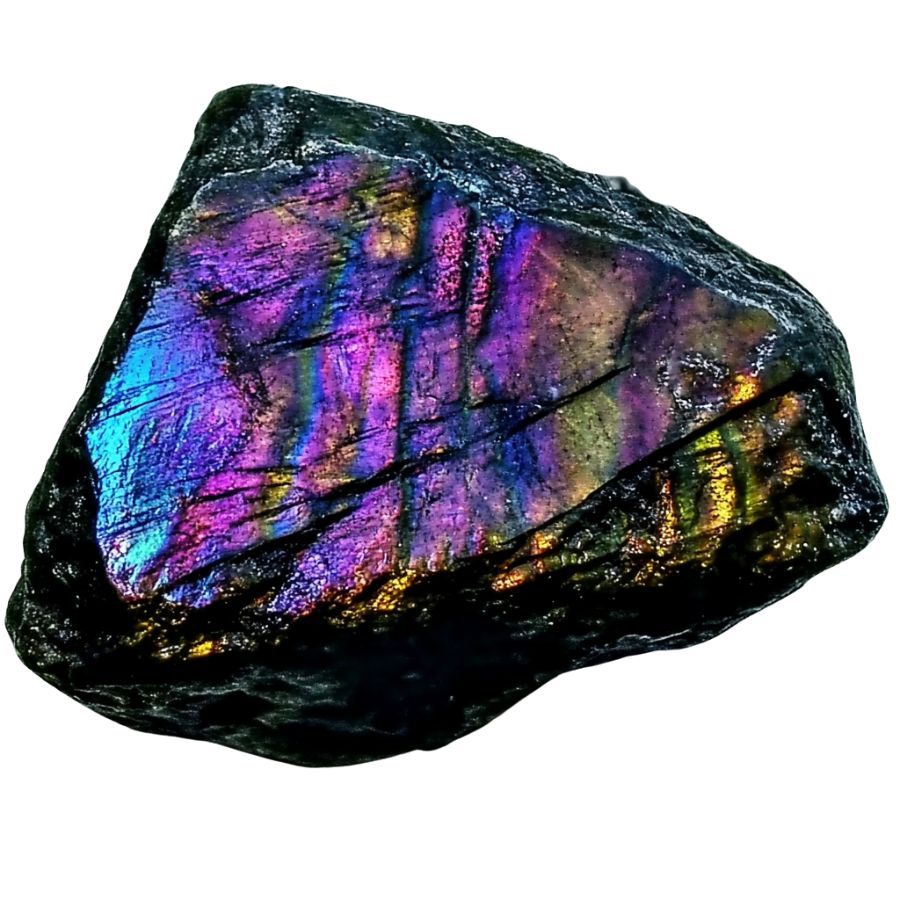
Spectrolite reigns as the most dramatic member of this stone family, with its distinctive jet-black base setting it apart from other varieties.
What makes it truly special is that premium specimens can simultaneously display the complete spectrum of colors, from deep indigo to bright orange, emerald green to royal purple, all in a single piece.
The finest specimens possess what experts call “full-face color,” meaning the vibrant display covers most of the stone’s surface rather than appearing in small patches.
This characteristic, combined with its remarkable color intensity, has earned Spectrolite its reputation as the most visually impressive variety of all similar stones.
Transparent Labradorite
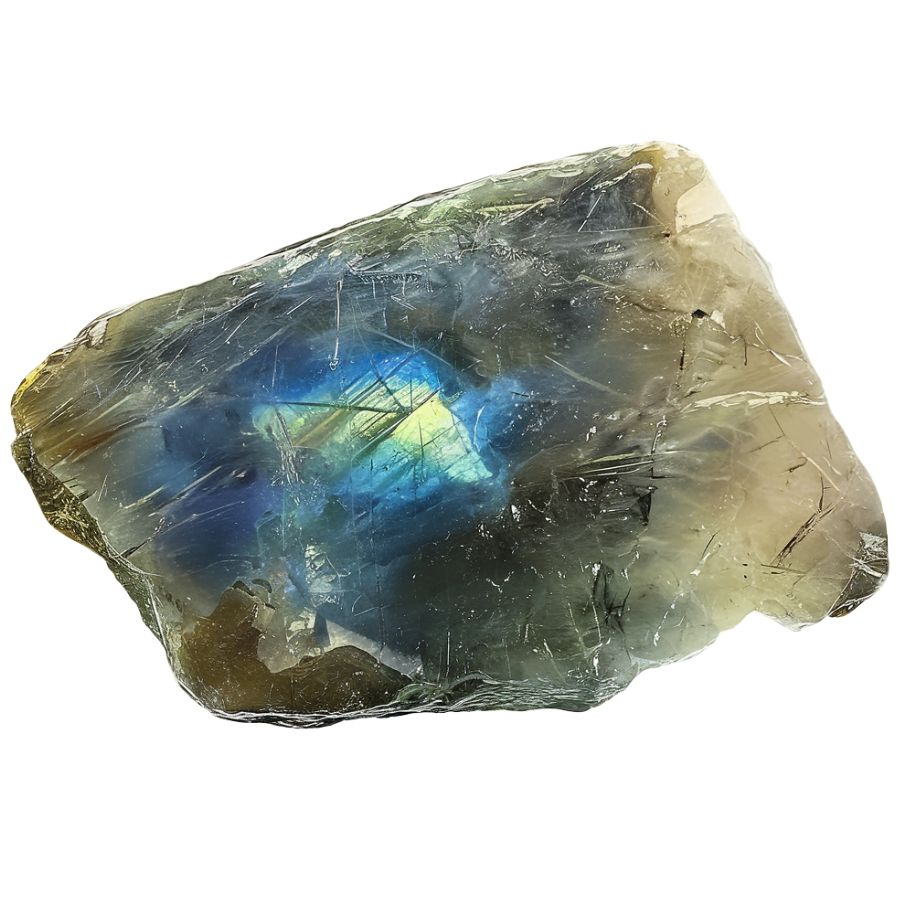
Transparent Labradorite exhibits a remarkable clarity that separates it from its opaque cousins. Crystal-clear areas allow light to pass through, creating an exceptional display of blue flashes against the transparent background.
Natural specimens often show areas of both transparency and translucency. Beautiful color changes occur as you move this stone, with the transparent areas revealing subtle blue sheens that seem to float within the crystal.
Some pieces display additional colors like soft greens or pale yellows, though the blue flash remains dominant.
Remarkable clarity combines with the signature color play to create stones that appear almost liquid-like.
Andesine-Labradorite
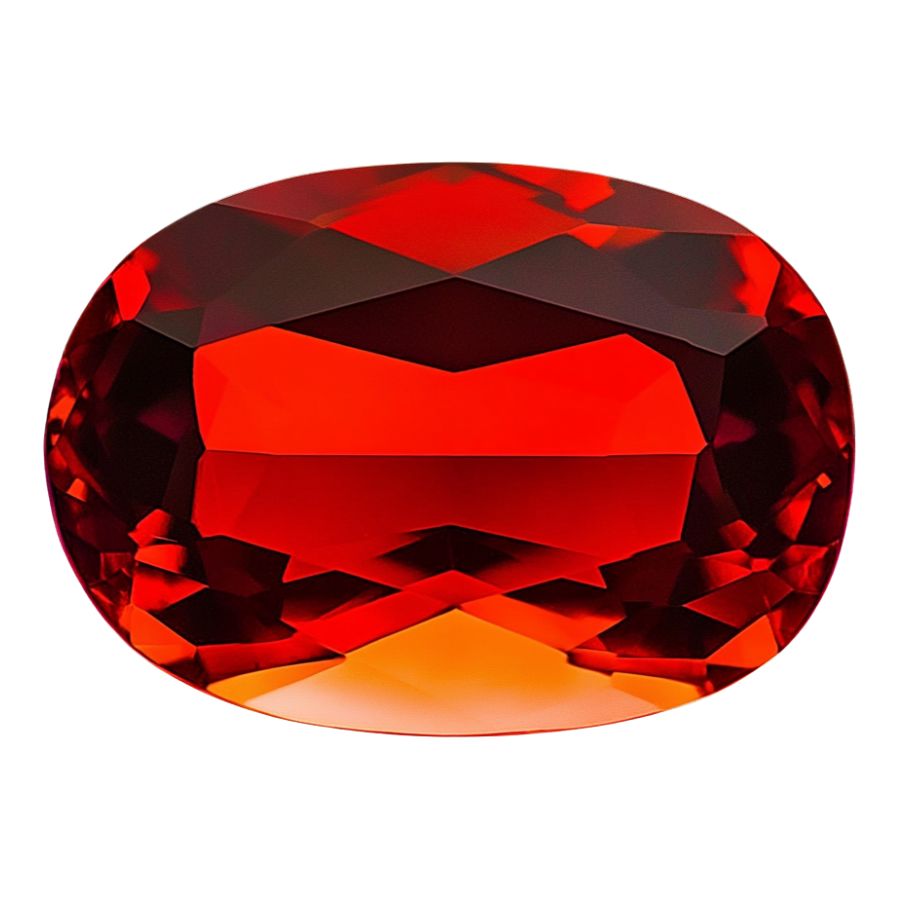
Reddish-orange hues dominate Andesine-Labradorite’s appearance, creating a warm and inviting glow. Delicate green and yellow streaks often appear throughout the stone, adding complexity to its color palette.
Metallic sparkles dance across the surface, different from the typical labradorescent effect. Fresh discoveries of this relatively new gemstone continue to reveal new color combinations.
Striking color variations appear in high-quality pieces, ranging from deep red to bright orange. Many specimens show subtle color zoning, where different hues blend together in distinct patterns.
Black Labradorite
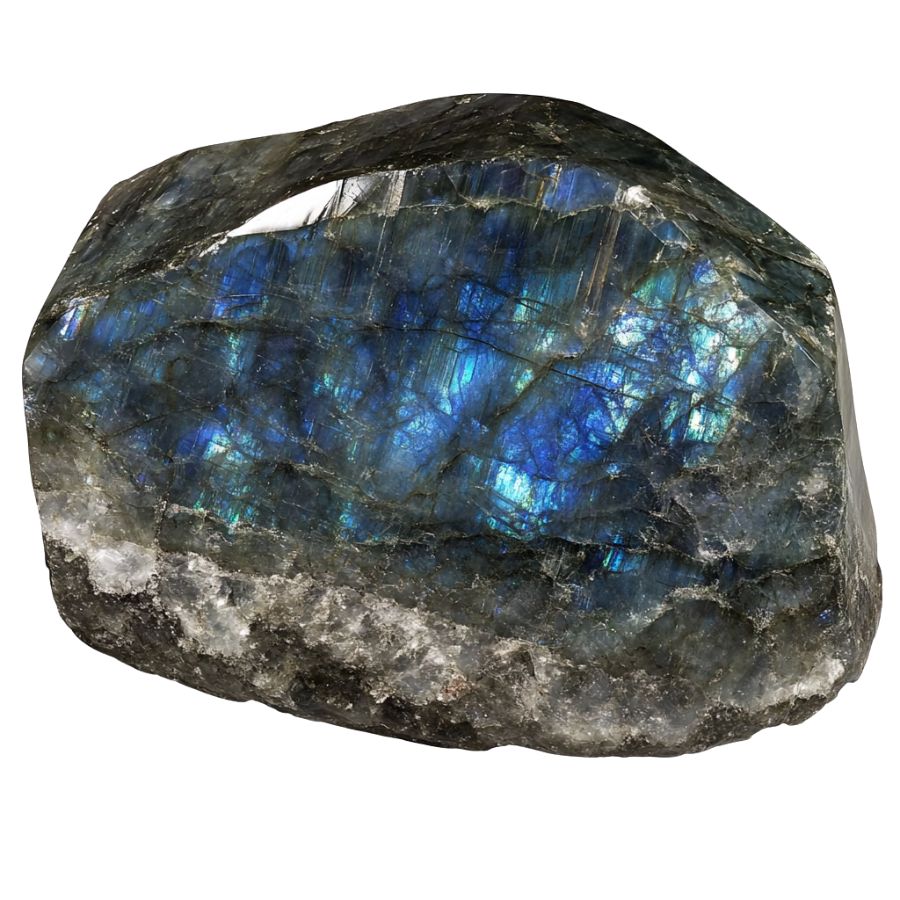
Black Labradorite presents a dramatic dark canvas that emphasizes its colorful display. Bright flashes of color stand out dramatically against the deep black background, creating stunning visual contrast.
Most specimens show multiple colors at once, creating an eye-catching display. These color displays often include electric blues, emerald greens, and golden yellows, all visible simultaneously.
Natural sunlight brings out the boldest displays, while artificial light can highlight subtle color variations. Some specimens also show interesting patterns in how the colors are distributed.
Brown Labradorite

Brown Labradorite features rich earth tones ranging from deep chocolate to warm amber. Peach and orange undertones often appear throughout the stone, creating depth and dimension.
Multiple color zones create interesting patterns within each stone. These patterns can include stripes, swirls, or mottled areas that combine different brown and orange hues.
Subtle iridescence sometimes appears on the surface, adding an unexpected shimmer to the earthy colors. This effect is more subdued than in other varieties but adds an interesting dimension to the stone’s appearance.
If you want REAL results finding incredible rocks and minerals you need one of these 👇👇👇
Finding the coolest rocks in isn’t luck, it's knowing what to look for. Thousands of your fellow rock hunters are already carrying Rock Chasing field guides. Maybe it's time you joined the community.
Lightweight, mud-proof, and packed with clear photos, it’s become the go-to tool for anyone interested discovering what’s hidden under our red dirt and what they've already found.
Join them, and make your next rockhounding trip actually pay off.
What makes it different:
- 📍 Find and identify 140 incredible crystals, rocks, gemstones, minerals, and geodes across the USA
- 🚙 Field-tested across America's rivers, ranchlands, mountains, and roadcuts
- 📘 Heavy duty laminated pages resist dust, sweat, and water
- 🧠 Zero fluff — just clear visuals and straight-to-the-point info
- ⭐ Rated 4.8★ by real collectors who actually use it in the field
What Rough Labradorite Looks Like
Labradorite in its rough form can be tricky to spot, but once you know what to look for, it becomes easier. Here’s how to recognize this fascinating stone in its natural state.
Look for the Signature Flash
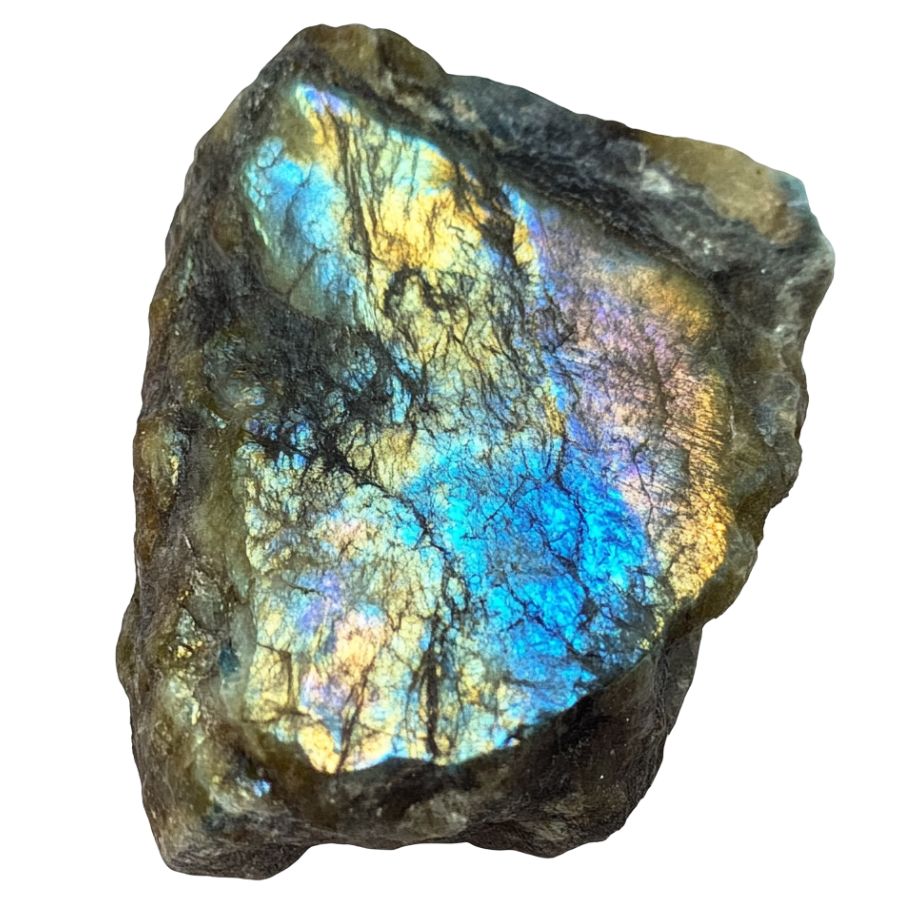
Raw labradorite often shows patches of its famous iridescent flash, even when unpolished. Check dark gray or black areas under direct sunlight – you might catch glimpses of blue, green, or gold shimmer.
Sometimes, you’ll need to wet the surface slightly to see this effect better. The flash isn’t always obvious but usually appears as scattered patches.
Check the Base Color and Texture
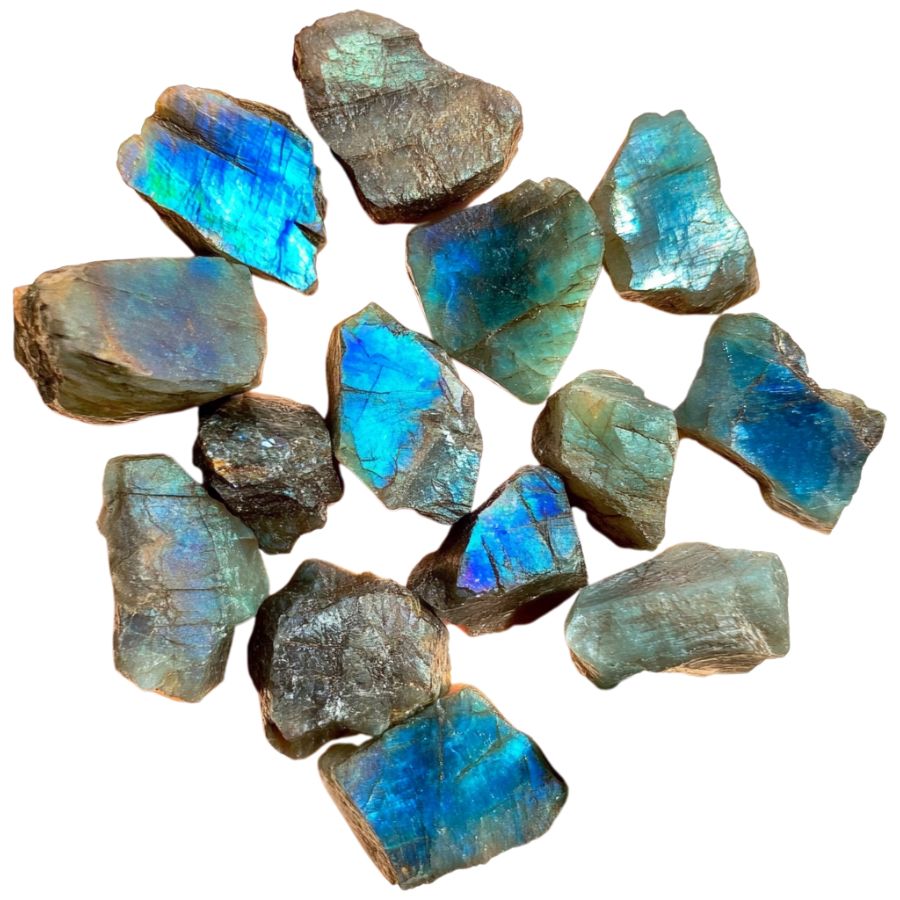
The main body should be dark gray to black, sometimes with a slight greenish tinge. The surface feels smooth but not glossy, similar to unpolished glass.
Look for a slightly bumpy texture with occasional flat surfaces. Fresh breaks will show a more uniform color than weathered surfaces.
Assess the Hardness and Breakage

Try scratching the surface with a copper penny – it shouldn’t leave a mark. The stone often breaks with smooth, flat surfaces at distinct angles.
You’ll notice these angular breaks are pretty characteristic, unlike random rough breaks in common rocks.
Test the Translucency
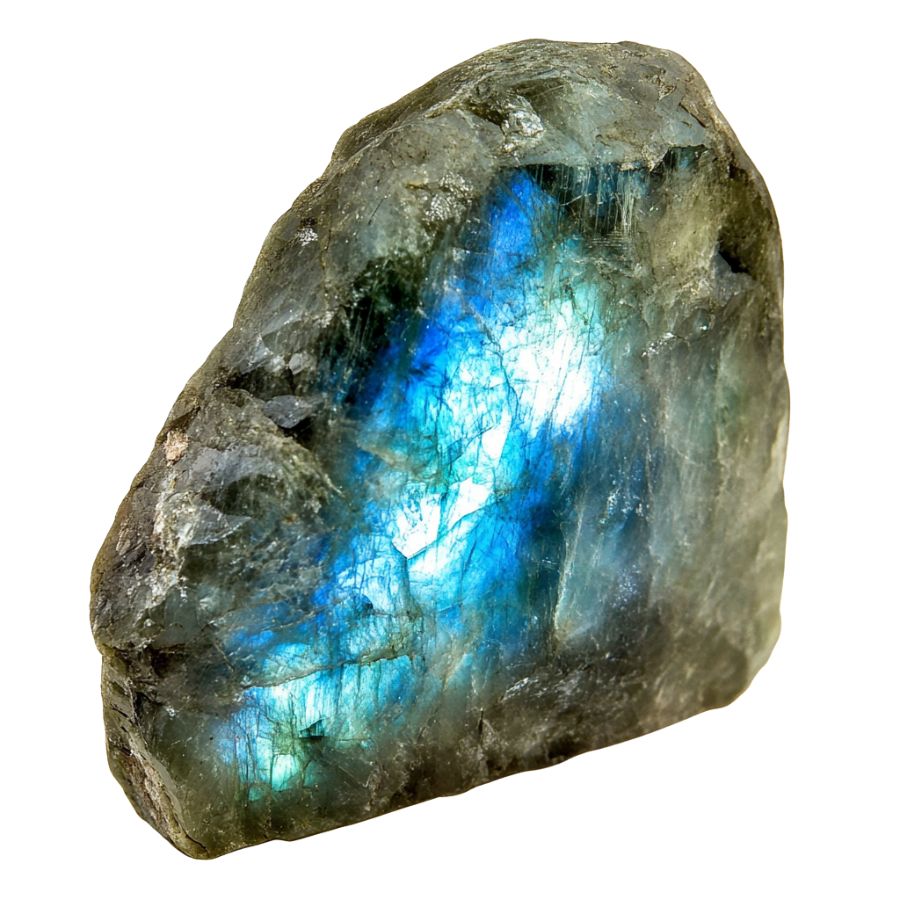
Hold a thin edge up to strong light. Raw labradorite should show some translucency, appearing slightly cloudy rather than completely opaque. The edges might look slightly whitish or gray when light passes through. Thicker pieces will appear darker and more opaque.
A Quick Request About Collecting
Always Confirm Access and Collection Rules!
Before heading out to any of the locations on our list you need to confirm access requirements and collection rules for both public and private locations directly with the location. We haven’t personally verified every location and the access requirements and collection rules often change without notice.
Many of the locations we mention will not allow collecting but are still great places for those who love to find beautiful rocks and minerals in the wild without keeping them. We also can’t guarantee you will find anything in these locations since they are constantly changing.
Always get updated information directly from the source ahead of time to ensure responsible rockhounding. If you want even more current options it’s always a good idea to contact local rock and mineral clubs and groups
Tips on Where to Look
Labradorite isn’t super common in everyday places, but with some smart searching, you can find it. Here’s where you should look:
Metamorphic Rock Formations
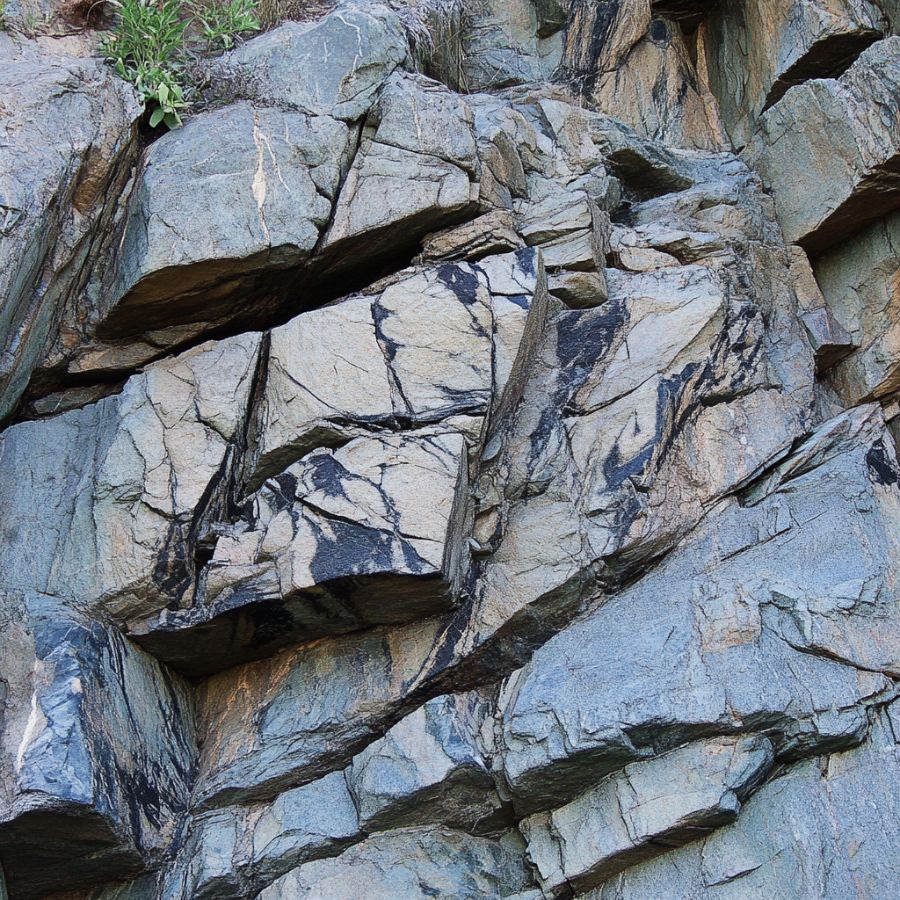
Look for dark-colored rock outcrops. Spot areas with lots of feldspar minerals. Check exposed cliff faces. Sometimes, when the sun hits just right, you might catch that signature blue flash from larger formations that’s a dead giveaway for labradorite presence.
Glacial Deposits
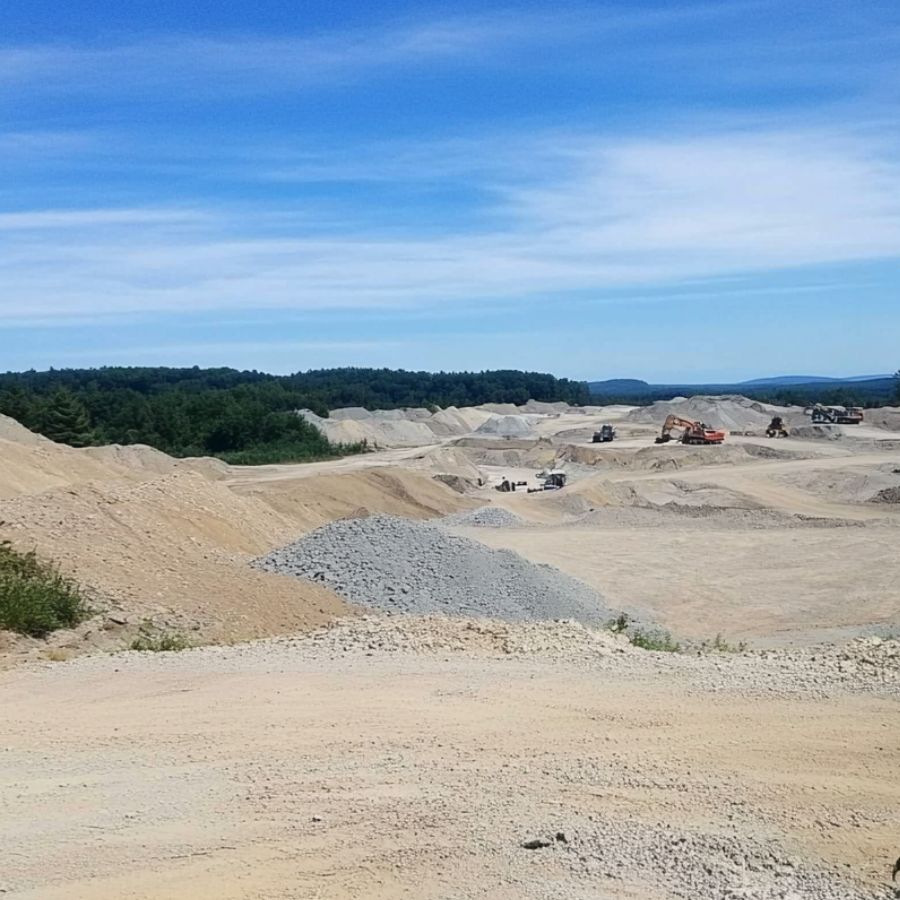
Search river beds after glacial deposits. Check gravel pits near old glacial paths. Look for smooth, dark gray stones mixed with other rocks. These deposits often contain chunks of labradorite that have broken off from larger formations and been carried downstream over thousands of years.
Mining Tailings
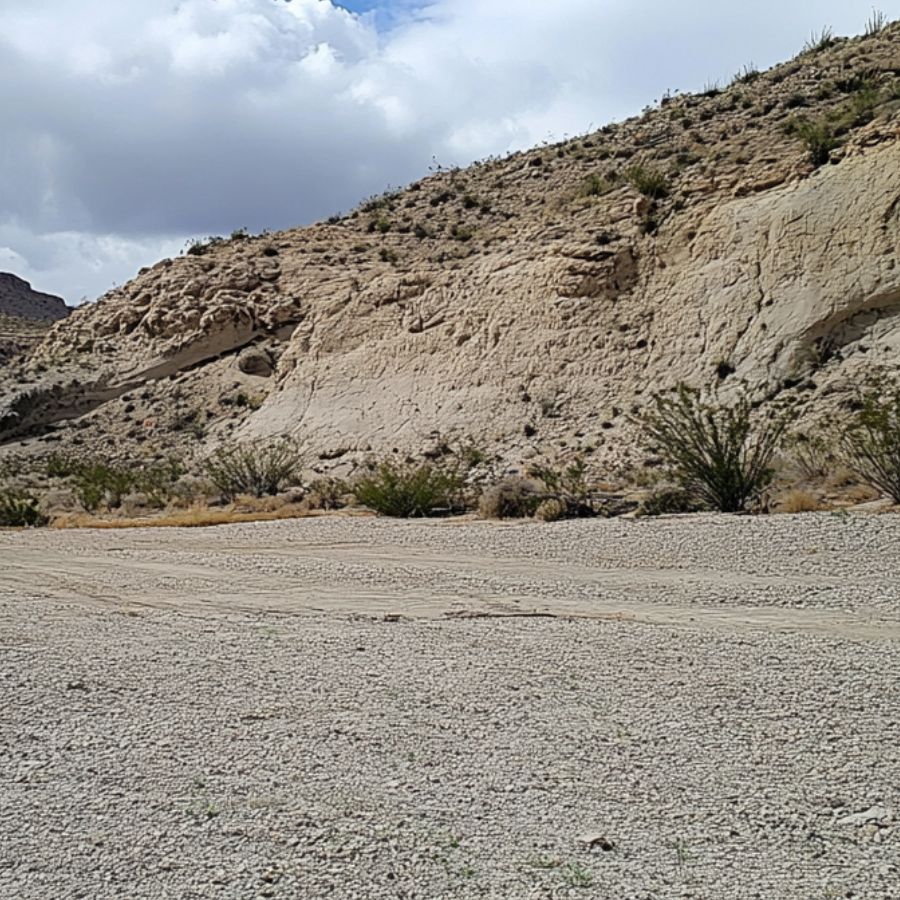
Visit abandoned feldspar mines. Check mine dump areas. Dig through tailings piles. Look for flat, shiny surfaces. The waste rock from old mining operations often contains overlooked pieces of labradorite that weren’t considered valuable during active mining periods but are perfect for collectors.
Stream Beds
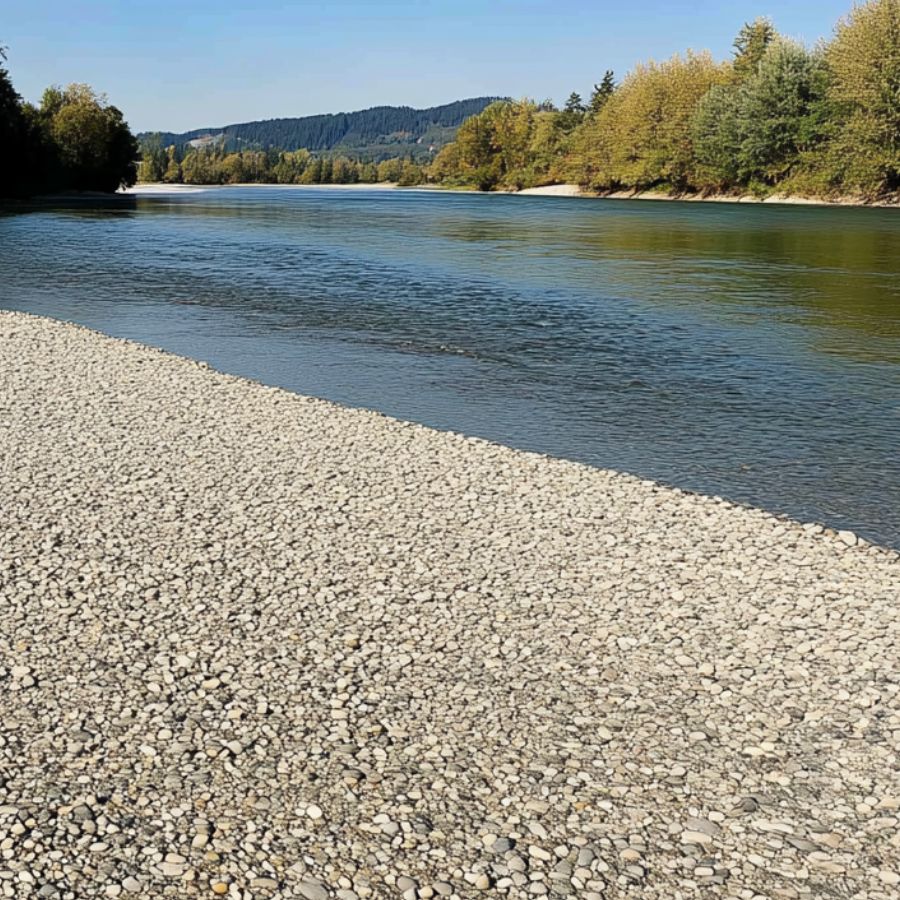
Search clear-water streams. Look under water-worn rocks. Check gravel bars after rain. Spot dark, plate-like stones. The constant water movement often exposes and polishes these stones, making them easier to identify when wet.
Some Great Places To Start
Here are some of the better places in the state to start looking for Labradorite:
Always Confirm Access and Collection Rules!
Before heading out to any of the locations on our list you need to confirm access requirements and collection rules for both public and private locations directly with the location. We haven’t personally verified every location and the access requirements and collection rules often change without notice.
Many of the locations we mention will not allow collecting but are still great places for those who love to find beautiful rocks and minerals in the wild without keeping them. We also can’t guarantee you will find anything in these locations since they are constantly changing.
Always get updated information directly from the source ahead of time to ensure responsible rockhounding. If you want even more current options it’s always a good idea to contact local rock and mineral clubs and groups
Hot Spring Area
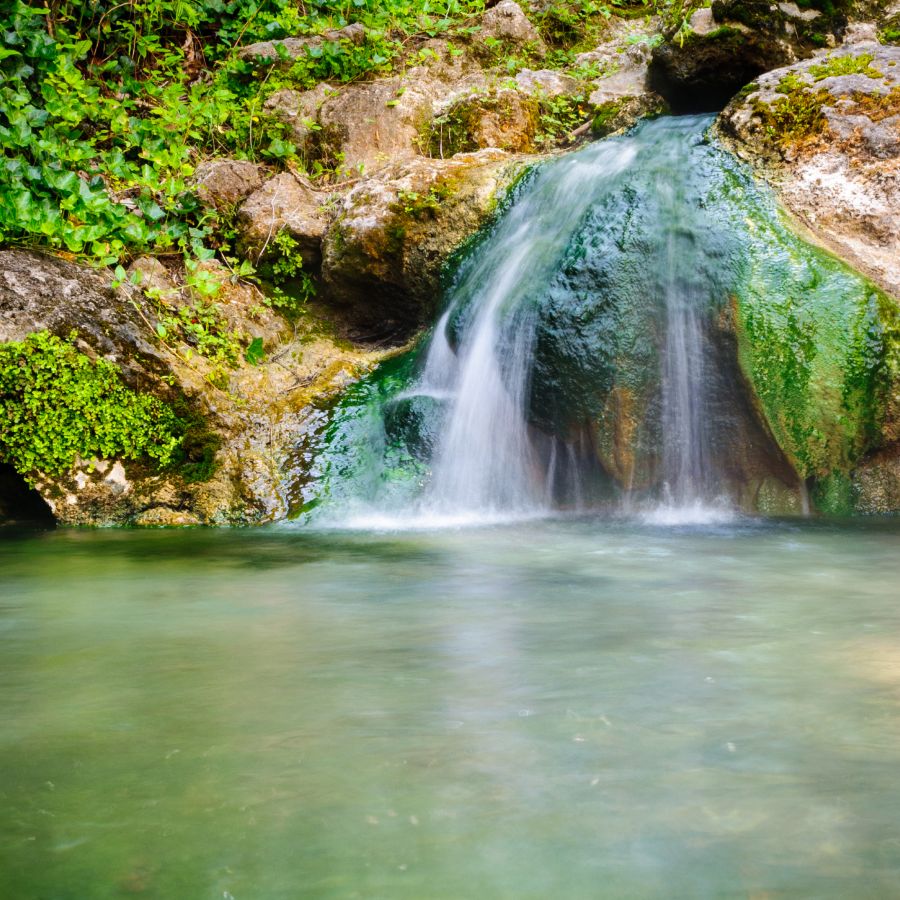
Hot Spring County is in the Ouachita Mountains region. It’s a place where many rocks and minerals are found. This county is famous for a special area called Magnet Cove, which has over 100 different minerals.
The Magnet Cove area formed millions of years ago when hot magma pushed into older rocks. This created perfect conditions for many rare minerals to form.
To find Labradorite in the Magnet Cove area, look around the Diamond Jo Quarry and near Highway 51. These places have the best chances of discovering this shimmering stone. The county has many types of unusual rocks, like nepheline syenite, that often contain Labradorite.
Many rock collectors visit this area to find titanium-rich minerals too. The county also has deposits of novaculite, a hard rock once used to make tools. When searching for Labradorite here, bring proper tools for breaking and examining rocks from the igneous outcrops typical of the area.
Pulaski Area
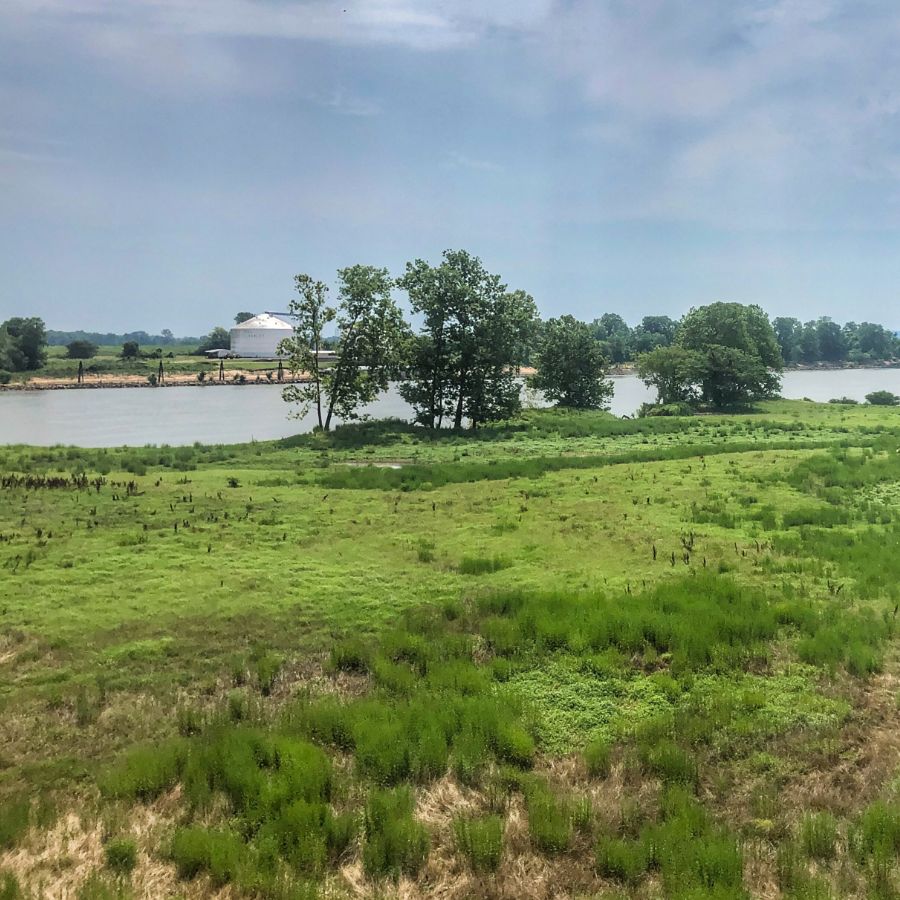
Pulaski County is in central Arkansas and includes the state capital, Little Rock. This county has many interesting geological features that make it a good place to hunt for minerals. Pinnacle Mountain stands out in this area with its cone shape made of sandstone that’s over 300 million years old.
Labradorite collectors should check out the Ferndale Quartz deposit in the western part of the county. This area has produced many interesting mineral specimens over the years.
Granite Mountain is another important spot in Pulaski County. Rock hunters have found over 75 different minerals at this location. The mountain’s unique geology creates pockets where Labradorite can form alongside other interesting minerals.
When exploring Pulaski County, look for areas where igneous rocks are exposed. These dark-colored rocks often contain the feldspar minerals that include Labradorite. Spring is usually the best time to search after rains have washed away dirt covering the stones.
Saline Area
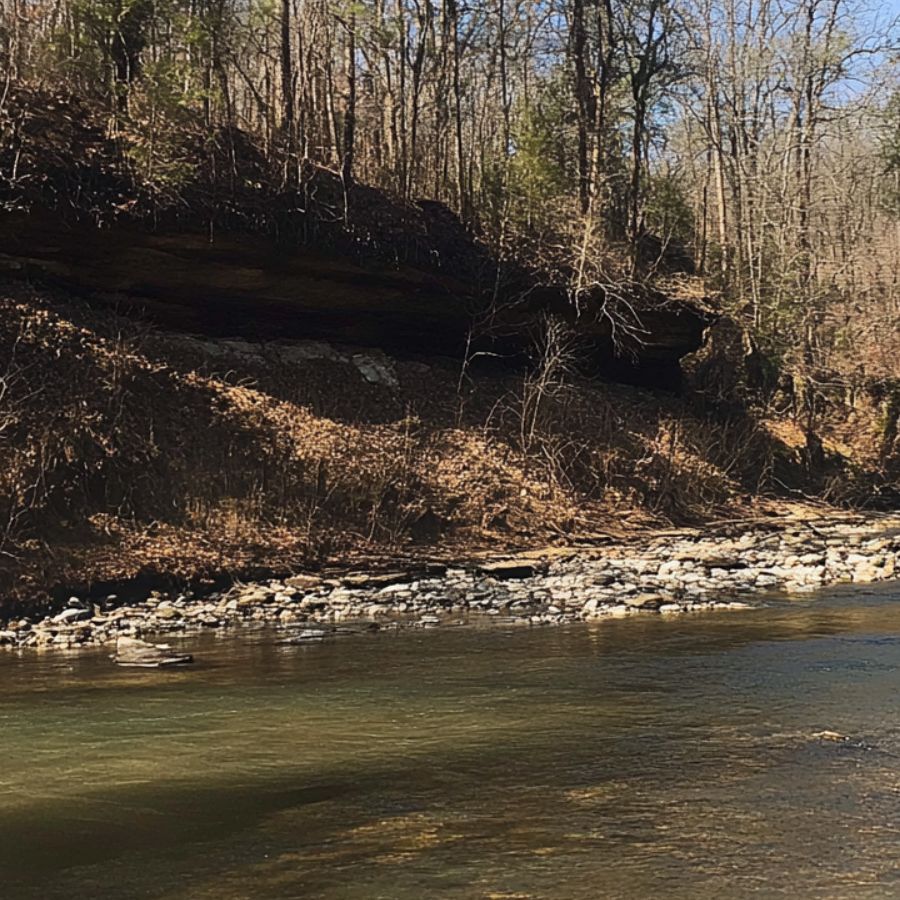
Saline County is located just southwest of Little Rock in central Arkansas. This area has a rich history of mining, especially for bauxite (aluminum ore). The varied landscape includes hills, valleys, and forests that hide many mineral treasures.
Rock collectors searching for Labradorite should explore the western parts of Saline County near Paron. The mineral typically appears in the darker igneous rocks that cut through the area’s older stone layers.
Another good spot is the Granite Mountain Complex near Sweet Home. Here, ancient molten rock pushed up and cooled slowly underground, creating perfect conditions for large feldspar crystals, including Labradorite, to form. These rocks were later exposed by erosion and mining activity.
Local rockhounds sometimes find Labradorite specimens after heavy rains when the stones are clean and their blue flash is easier to spot. Bringing a spray bottle of water can help identify potential specimens in the field by enhancing their distinctive color play.
Wilson Springs Area
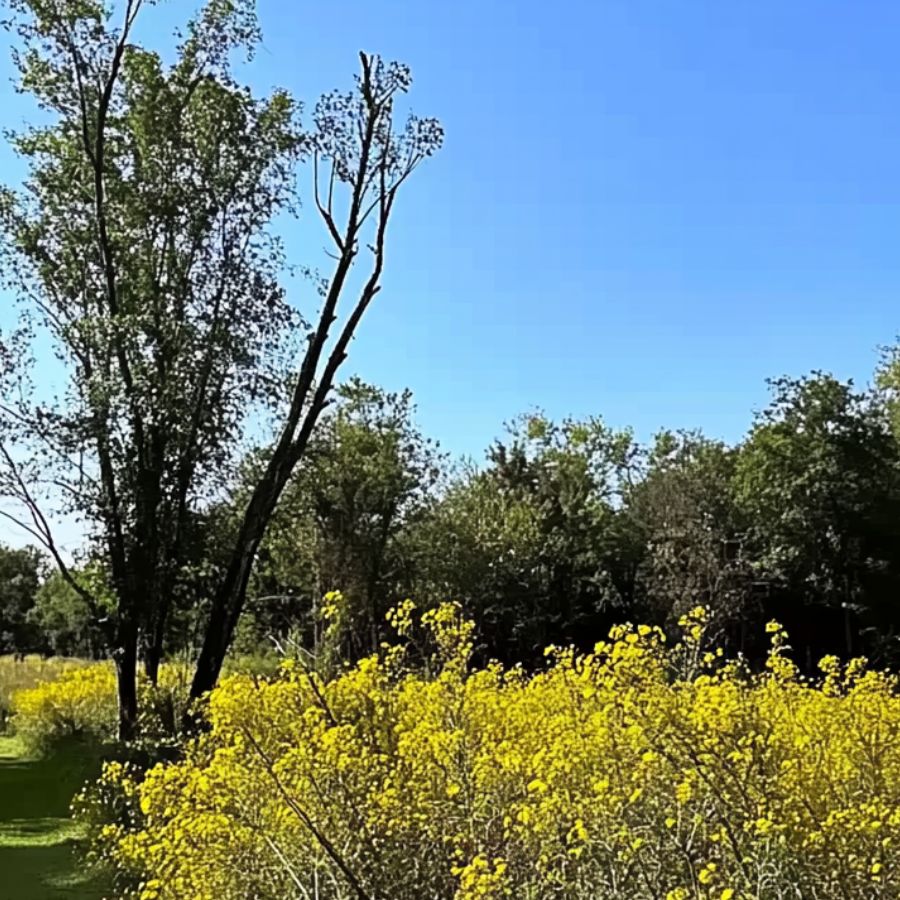
Wilson Springs is a fascinating mineral location in Garland County. This site was previously a major vanadium mining operation run by Union Carbide Corporation in the 1960s. Today, it attracts mineral enthusiasts looking for unusual specimens.
The geology at Wilson Springs is special because molten rock called syenite pushed into the surrounding sedimentary layers. This process created a mineral-rich environment where Labradorite and many other interesting minerals formed. Some minerals were first discovered here and nowhere else in the world!
Labradorite hunters should focus their search in the North Wilson Pit and East Wilson Pit areas. The T Pit area is also known to yield good specimens.
What makes this location unique is the variety of rare minerals found alongside Labradorite. The area has produced vanadium minerals with unusual colors and crystal forms.
Mount Ida Area

Mount Ida is a small town in Montgomery County known as the “Quartz Crystal Capital of the World.” This area in the Ouachita Mountains attracts thousands of visitors each year who come to dig for minerals.
While most people visit Mount Ida for its clear quartz crystals, Labradorite can also be found here. The surrounding hills contain various types of rocks that sometimes include this colorful feldspar mineral. Unlike the quartz that forms in veins, Labradorite typically appears in darker igneous rocks scattered throughout the area.
Wegner Quartz Crystal Mines, south of town, is a good starting point for Labradorite hunters. Their “Crystal Forest Mine” covers 40 acres where visitors can search for various minerals. Twin Creek Crystal Mine, northeast of Mount Ida, and Avant Mining’s Fisher Mountain also offer possibilities for finding Labradorite specimens.
Places Labradorite has been found by County
After discussing our top picks, we wanted to discuss the other places on our list. Below is a list of the additional locations along with a breakdown of each place by county.
| County | Location |
| Hot Spring | Midstate Quarry |
| Pulaski | Big Rock Quarry |
| Polk | Ouachita Mountains |
| Logan | Mount Magazine |
| Montgomery | Hatfield Area |
| Marion | Buffalo National River |
| Montgomery | Black Mountain |

